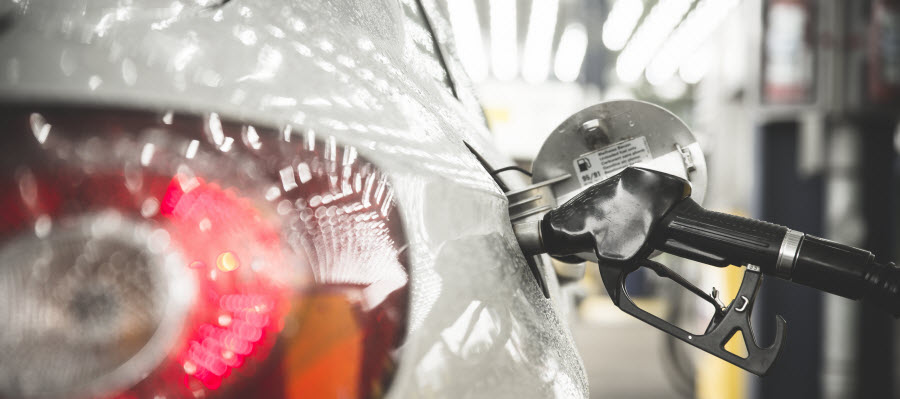Tag: Automotive Finance Market analysis

According to Experian’s Q3 2020 State of the Automotive Finance Market report, 26.20% of all new vehicles are leased compared to 30.27% last year.

While things aren't quite back to normal in Q3 2020, there were a number of positive trends that demonstrates the automotive industry's resilience.

The early assessment for the automotive industry is that despite significant challenges at the onset of the pandemic, the industry continues to rebound.

Vehicle affordability has been a main topic of conversation in the auto industry for some time, and based on the data, it’s not going unnoticed by consumers. The average new vehicle loan in Q1 2019 reached $32,187, while the average new vehicle monthly loan payment hit $554. How are car shoppers reacting? Perhaps the biggest shift in Q1 2019 was the growth of prime and super prime customers opting for used vehicles. The percentage of prime (61.88 percent) and super-prime (44.78 percent) consumers choosing used vehicles reached an all-time high in Q1 2019, according to Experian data. Not only are we seeing new payment amounts increase, but used loan amounts and payments are on the rise as well, though the delta between the two can be one of the reason we’re seeing more prime and super prime opt for used. The average used vehicle loan was slightly above $20,000 in Q1 2019, while the average used vehicle payment was $391. We know that consumers often shop based on the monthly payment amount, and given the $163 difference between average monthly payments for new and used, it’s not surprising to see more people opt for used vehicles. Another way that consumers can look to have a smaller payment amount is through leasing. We’re continuing to see that the top vehicles leased are more expensive CUVs, trucks and SUVs, which are pricier vehicles to purchase. But with the average lease payment being $457 per month, there’s an average difference of $97 compared to loan payments. In Q1 2019, leasing was down slightly year-over-year, but still accounted for 29.07 percent of all vehicle financing. On the other side of the affordability equation, beyond cost of vehicles, is concern around delinquencies: will consumers be able to make their payments in a timely manner? So far, so good. In Q1 2019, 30-day delinquencies saw an increase to 1.98 percent, up from 1.9 percent a year ago. That said, banks, credit unions and finance companies all saw slight decreases in 30-day delinquency rates, and 60-day delinquencies remained relatively stable at 0.68 percent year-over-year. It’s important to keep in mind that the 30-day delinquency rate is still well-below the high-water mark in Q1 2009 (2.81 percent). The vehicle finance market appears to remain strong overall, despite rising vehicle costs, loan amounts and monthly payments. Expect consumers to continue to find ways to minimize monthly payments. This could continue the shift into used vehicles. Overall, as long as delinquencies stay flat and vehicle sales don’t taper too badly, the auto finance market should stay on a positive course. To watch the full Q1 2019 State of the Automotive Finance Market webinar, click here.

There’s recently been a significant amount of discussion about the stability of the automotive finance industry. Many fear the increase in the volume of delinquent U.S. automotive loans may be an early stage harbinger of the downfall of the automotive industry. But, the fact is, that’s not entirely true. While we certainly want to keep a close eye on the volume of delinquent loans, it’s important to put these trends into context. We’ve seen a steady increase in the volume of outstanding loan balances for the past several years – though the growth has slowed the past few quarters. And while much of the increase is driven by higher loan amounts, it also means there’s been an overall higher volume of vehicle buyers leaning on automotive lenders to finance vehicles. In fact, findings from our Q4 2018 State of the Automotive Finance Market Report show 85.1 percent of all new vehicle purchases were financed in Q4 2018 – compare that to 81.4 percent in Q4 2010 and 78.2 percent in Q4 2006. Suffice it to say, more financed vehicles will undoubtedly lead to more delinquent loans. But that also means, there is a high volume of car buyers who continue to pay their automotive loans in a timely manner. Through Q4 2018, there were nearly 86 million automotive loans and leases that were in good standing. With a higher volume of automotive loans than in the past, we should pay close attention to the percentage of delinquent loans compared to the overall market and compare that to previous years. And when we examine findings from our report, the percentage of automotive loans and leases that were 30-days past due dropped from 2.36 percent to 2.32 percent compared to a year ago. When we look at loans and leases that were 60-days past due, the percentages are relatively stable (up slightly from 0.76 percent to 0.78 percent compared to a year ago). It’s worth noting, these percentages are well below the high-water mark set during Q4 2009 when 3.30 percent of loans were 30-days delinquent and 0.94 percent of loans were 60-days delinquent. But, while the rate of delinquency is down and/or relatively stable year-over-year, it has trended upward since Q4 2015 – we’ll want to stay close to these trends. That said, much of the increase in the percentage of 60-day delinquent automotive loans is a result of a higher percentage of deep subprime loans from previous years – high-risk originations that become delinquent often occur more than 16 months after the origination. Additionally, the percentage of deep subprime originations has steadily decreased over the past two years, which could lead to a positive impact on the percentage of delinquent automotive loans. Despite rising automotive loan amounts and monthly payments, the data shows consumers appear to be making their payments on-time – an encouraging sign for automotive lenders. That said, lenders will want to continue to keep a close eye on all facets of car buyers’ payment performance moving forward – but it is important to put it into context. A clear understanding of these trends will better position lenders to make the right decisions when analyzing risk and provide consumers with comprehensive automotive financing options. To learn more about the State of the Automotive Finance Market report, or to watch the webinar, click here.

Like every other industry, the automotive market is driven by consumer preferences and behavior. While there are a myriad of options to choose from, fuel-type seems to dominate media headlines as a hot topic of conversation among industry pundits and consumers, alike. Little surprise then that alternative fuel vehicles, which include diesels and hybrids, have maintained a steady demand over the past few years. But, there’s a specific segment that’s beginning to emerge. As we detailed in our earlier blog series, electric vehicles (EVs) are began to stand out as a prominent alternative fuel vehicle. And during Q3 2018, we saw more of the same. EVs held 1.8 percent share of total vehicle registrations. While that number may seem small, consider this. Just two years ago, in 2016, EVs comprised only 0.5 percent of registrations, growing at a much slower pace since 2014, when it was 0.4 percent. It’s worth noting that gasoline-powered cars still dominate the market, making up 92.9 percent of registered vehicles through Q3 2018. But, the demand for alternative fuel type options should not be underestimated. Alternative fuel vehicles are becoming a significant segment in today’s auto market, and the large growth in EVs are a testament to that growth. While EVs are proving to be a popular option compared to other alternative fuel types, other options remained steady. Diesel vehicles maintained 2.8 percent of the market year-over-year, while hybrid vehicles saw a slight increase since 2017, growing from 2.6 to 2.8 percent of the market. A picture of the alternative fuel buyer So, who’s investing in these alternative fuel vehicles? We see that most buyers tend to be married, single family home owners with a college education, and belong to either the Baby Boomer generation or Gen X. It’s interesting to note that EVs make up a notable percentage of registrations of alternative fuel type preferences across generational car buyers, according to Q3 registration data. Among Baby Boomers, EVs fall second to hybrids, accounting for 1.0 percent of registered alternative fuel type vehicles compared to 1.2 percent respectively. But, EVs made up the biggest share of alternative fuel type registrations among Millennials (1.1 percent) and Gen X’ers (1.2 percent). With the number of vehicle options available on the market today, EVs stand out as a segment to watch within the auto industry. There’s a greater story beyond the numbers and understanding how to leverage the data at hand can provide the industry with a greater understanding of the EV market and its potential. To learn more about the electric vehicle market and other alternative fuel type vehicles, view the full Q3 2018 Automotive Market Trends Analysis webinar.

Vehicle prices are going up, yet consumers seem unfazed. Despite consumers taking out larger loan amounts, they continue to make their monthly payments on time. But, affordability remains a point of industry interest. As vehicle prices hit record highs, how long will consumers have an appetite for them? According to Experian’s latest State of Automotive Finance Market report, delinquency rates continued a downward trend, as 30- and 60-day delinquencies were 2.11 and 0.64 percent, respectively, at the end of Q2. Those numbers demonstrate that car owners are making timely payments despite rising vehicle costs, which is an encouraging sign for the market. The average loan amount for a new vehicle is now $30,958, a $724 increase from last year. Additionally, consumers are now making monthly payments of about $525 on a new car loan, an all-time high that has seen a $20 year over year increase. The auto market shows little to no sign of declining costs, but vehicles aren’t the only cost to consider – interest rates have increased by 56 basis points since last year. When combined with the rising manufacturer costs, long-term affordability is a continued concern within the industry. The data points to consumers offsetting the expense by taking out longer loan terms. In Q2, the most common loan length was 72 months—which equates to six years—for both new and used financing. While this lowers the monthly payment, it leaves them subject to paying higher interest over time, as well as the potential for individuals to be upside down on their loan for a longer period of time. The key takeaway from this data is that costs continue to rise, but consumers appear to be doing a better job of managing their finances. This insight can help OEMs, dealers, and lenders make strategic decisions with a better understanding of consumer borrowing and credit habits, and think about how to make car ownership more inviting, through incentive or loyalty programs. For consumers, continuing to take steps to actively improve your credit score is one of the key ways to ensure that you’re able to negotiate the right deal when it comes to financing. Ultimately, for everyone involved, it comes down to leveraging the power of data to make more informed decisions, which can help make vehicle ownership more accessible and affordable. To learn more about the State of the Automotive Finance Market report, or to watch the webinar, click here.

The economy remains steady, maintaining a positive outlook even though the GDP growth slowed in the first quarter. Real estate is holding ground even as rates rise. We’ve reached a 7-year high in 30-year fixed-rate mortgages, which could have a longer-term effect on this market. Bankcard may be reaching its limit — outstanding balances hit $764 billion and delinquency rates continue to rise. While auto originations were flat in Q1, performance is improving as focus moves away from subprime lending. The economy remains steady as we transition from 2017. Keep an eye on inflation and interest rates in regard to their possible short-term economic impact. Learn more about these and other economic trends with the on-demand recording of the webinar. Watch now

Auto originations continue to increase — particularly within prime categories. According to Experian’s latest State of the Automotive Finance Market report: Prime consumers grabbed the lion’s share of the total finance market, at 40.9%. Super-prime buyers showed the largest increase, reaching 20.2%. Consumers outside the prime category (credit score of 600 or lower) decreased to the lowest share on record since 2012. Credit unions and captive lenders increased market share of total vehicle financing, growing to 21% and 29.8% — an increase of 6.9% and 35.1%, respectively. As auto loan originations continue their upward trend, lenders can stay ahead of the competition by using advanced analytics to target the right customers and increase profitability.

Setting new records isn’t just for racecar drivers. The auto finance industry continues to achieve its own new highs. According to Experian’s State of the Automotive Finance Market report, the average amount financed for a new vehicle in Q4 2016 was $30,261 — up $710 from Q4 2015 and the highest amount on record. The report also shows that the number of consumers opting for auto loans with longer terms (73 to 84 months) increased from 29% in Q4 2015 to 32.1% in Q4 2016. These findings underscore the importance of closely monitoring consumer credit trends to stay competitive, meet consumer demands and set your own new records. Webinar: Latest consumer credit trends>

A recent Experian study found that the amount of time it’s taking for automotive loans opened in Q4 2015 to become delinquent is actually similar to the pace in 2008. When looking at the 60+ DPD rate across all risk levels, the delinquency rate for accounts opened in Q4 2015 reached 0.50% within 6 months, compared with 0.51% for accounts opened in Q4 2008. Lenders can design more effective strategies by using analytics to gain insight into the latest trends and target the right customers. Video: Auto Acquisition Strategies>

When it comes to buying a vehicle, we found that consumers who owned a Certified Pre-Owned (CPO) used vehicle are most loyal to the original vehicle manufacturer — to the tune of 75% — when purchasing another CPO used vehicle. Consumer buying patterns show that the loyalty rate to the manufacturer is also high when: Moving from a new vehicle to another new vehicle (60.9%). Switching from a CPO used vehicle to a new vehicle (54.1%). By understanding loyalty rates and other key market trends, manufacturers, dealers and resellers can make smarter decisions that create more opportunities for themselves and in-market consumers. More insights>

Big changes for the new year 2017 is expected to bring some big changes. But what do those changes mean for the financial services space? Here are 3 trends and twists Experian expects to occur over the next 12 months: Trump and the Republican-controlled Congress will move forward with a deregulatory agenda. Recognizing and scoring more previously invisible consumers through alternative data sources will be emphasized. Personalized credit offers delivered via multiple digital channels in a sequenced, trackable manner. What are your predictions for 2017? Only time will tell, but we’re certain that regulations and advancements in digital will be huuuge. >>More 2017 trends

Leasing continued its strong growth as the share of new vehicles leased jumped from 26.9% in Q2 2015 to a record high of 31.4% in Q2 2016. As vehicle prices continue to rise, used vehicle loans also set new records. The average used vehicle loan reached an all-time high of $19,101 in Q2 2016, up from $18,671 in Q2 2015. Used vehicle loans accounted for 55.6% of all vehicle loans in Q2 2016. Want to capitalize on this growth? Analytics can help you target borrowers who are creditworthy and in the market for an auto loan or lease. >>Video: Auto Acquisition Strategies

According to the most recent State of the Automotive Finance Market report, the total balance of open automotive loans increased 11.1% in Q1 2016, reaching $1.005 trillion — up from $905 billion in Q1 2015. This is the first time on record that automotive loans have passed the $1 trillion mark. The report also revealed that subprime loan volumes experienced double-digit growth and overall delinquencies remained low. With more consumers relying on financing, lenders should monitor credit and delinquency trends in order to adjust strategies accordingly. >>Webinar: Hear about the latest consumer credit trends
